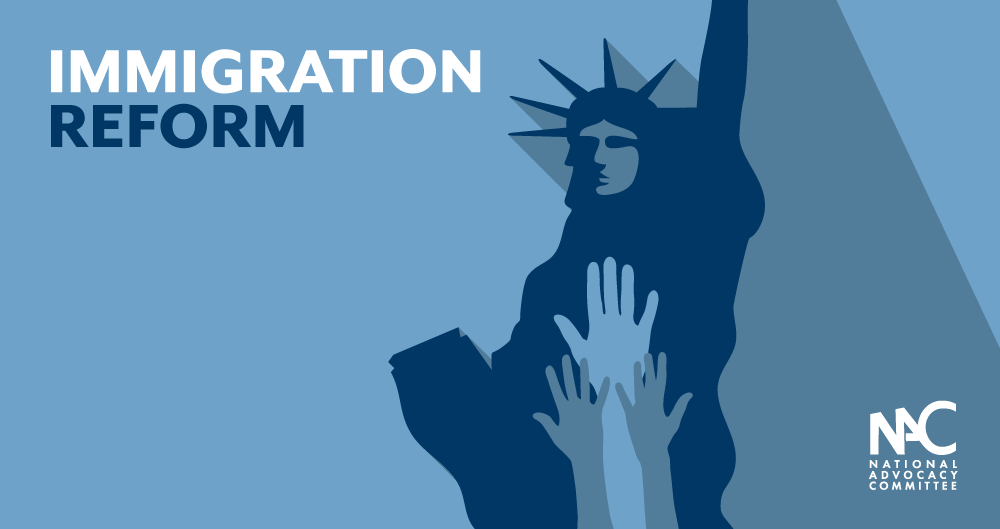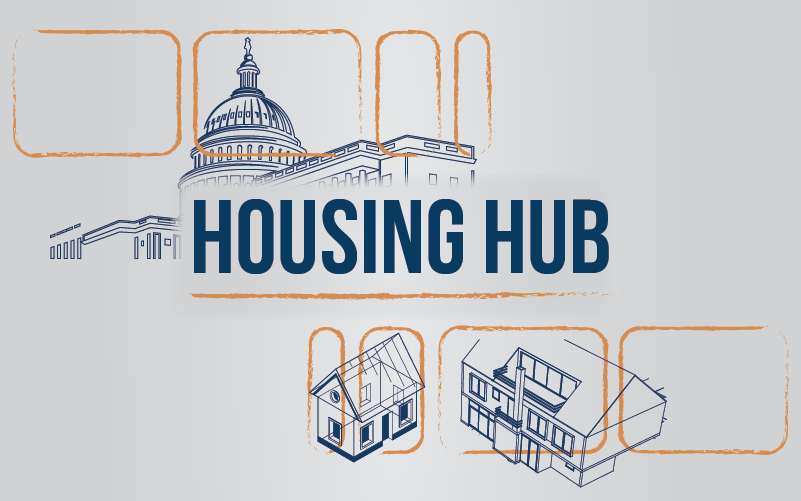Immigration reform does not mean open borders
Celebrating NAHREP familia, cultura, politics, and grassroots action
June 16, 2022
Qué onda mi gente?!
This week marks the 10th anniversary of the creation of the DACA program or the Deferred Action for Childhood Arrivals program. For ten years, Dreamers who arrived in this country as minors have been able to live close-to-normal lives when it comes to work, education, and basic government services without the fear of deportation. I want to remind us all that these are our friends, NAHREP members, NAHREP clients, and NAHREP family members. However, the program has come under attack by various court cases, and in the midst of one of the most politically polarized environments this country has ever seen, DACA is on shaky ground.
Immigration has remained as one of our three pillars of NAHREP advocacy, especially because we believe that immigration policy is economic policy. Today, fear dominates much of the disinformation around immigration so we thought that we would dive a little bit deeper into some of the statements we often hear in response to advocacy for immigration reform.
“It’s not that I don’t support immigration reform, I just support legal immigration.”
We hear this a lot. We hear this while we did advocacy on Capitol Hill and we even hear it from some of our members. I’ve worked on campaigns before and I’ve been in the room when “phrases” are made that are tested and then distributed among people to ensure it becomes a “talking point” that is repeated over and over and over again. These phrases are meant to instill some sort of emotion, or to put an end to a conversation that is usually very nuanced. This is exactly what this phrase is.
So let’s be clear: Immigration reform and legal immigration are the same thing – immigration reform is simply improving a broken immigration system so that people can immigrate here legally. There is a big misconception that immigration reform means open border policies that would allow anyone to immigrate whenever they want. I have yet to see an immigration reform package that doesn’t include both reforming our broken legal immigration system AND securing our borders.
The U.S. has historically relied on immigrant labor to ensure economic prosperity. With that said, we’re in the middle of one of the most severe labor shortages ever which brings us to the important point we’ve been making: immigration reform is good for our economy.

So first, let’s do a quick 101 class on why immigration reform is needed in the first place:
Let’s start with how our immigration system works. There are a few ways in which you can immigrate to the United States legally:
Family-Based Immigration: This is basically when you immigrate “legally” because a family member who is a U.S. citizen or permanent resident sponsors you. While there is no visa cap on immediate relatives of U.S. Citizens (spouses, minor children, and parents), there are limits for the other categories. Congress has a complicated system for determining this cap, but it usually ends up being 226,000, the minimum number of visas that must be made available in each fiscal year by law.
Employment-Based Immigration: Immigrants with skills considered “valuable” can immigrate to the U.S. either through temporary or permanent employment-based visas. This does not include most of the positions where we currently have some of the most severe labor shortages. (This does not include most of the labor where we currently have some of the most severe labor shortages in.) In 2019, employment-based visas made up 13.5 percent of new permanent residents. Temporary employment-based visas are highly job-specific and for a specific period. This category is typically reserved for highly skilled immigrants, such as “persons with extraordinary abilities,” people with advanced degrees, and persons who will invest $500,000 – $1,000,000 in job-creating enterprises.
Refugees and Asylum: Then there are refugees and asylum seekers. Refugees and asylum seekers are admitted if they are deemed unable to return to their home country because of fear of persecution due to race, membership in a social group, political opinion, religion, or national origin. Every year, the president and congress determine the numerical ceiling for refugees, which is broken down by region of the world they are coming from. There is no limit to the individuals who may be granted asylum each year. In 2019, 46,508 individuals were granted asylum.
Other Humanitarian Relief Programs: This category includes Temporary Protected Status (TPS) and Deferred Action for Childhood Arrivals (DACA). TPS allows temporary status to individuals who cannot return to their country because of ongoing conflict, a natural disaster, or a temporary extraordinary circumstance. DACA, established by President Obama in 2012, allows individuals who were brought to the U.S. when they were under 16 years old to remain in the U.S. and work for two years. This does not guarantee a path to legal permanent residence.
So now that we know how it works, why is it broken?
Immigration quotas are out of date: Congress has not updated the immigration quotas since 1990. Since then, a lot has changed. In the past 30 years, the U.S. population has increased by 30 percent and the economy (GDP) has doubled. That means more families are applying for family-based immigration programs and more employers need workers, especially considering our current labor shortage. Not only do we need to increase the visa caps, but they also need to be pegged to something, whether that be the economy, population growth, or both, to ensure they don’t become outdated.
Per country limits mean that some immigrants wait in line for decades: In addition to the limits placed on visa types, the U.S. places a limit on how many immigrants can come from a specific country – no more than 7 percent of the total number of immigrants each year can come from any one country. Basing immigrant visas on nationality is a huge problem. Immigrants from countries that have high immigration to the U.S., such as Mexico and many Latin American countries, have to wait painfully long times – times that become crippling for families. For example, siblings and adult children of U.S. citizens from Mexico that received their visas in May 2018 applied in 1998, waiting a whopping 20 years! With the backlogs we have today, many people applying for green cards will likely die before reaching the front of the line. The current estimated wait time for an applicant from India is 195 years, a number that is expected to reach 436 years by the fiscal year 2030.
Severe Backlogs: The backlogs in the system are outrageous. In 2021, there were 9 million immigrants with approved visa petitions that were still waiting for their green cards, which is A LOT considering the annual visa caps above. Additionally, this figure only includes immigrants living abroad (not those currently residing in the U.S.) and does not include the immediate relatives of U.S. citizens who are not subject to visa caps but still have to wait. It also doesn’t include immigrants with petitions pending approval. The severity of backlogs existed before the pandemic, but COVID-19 has made it worse. Between the fiscal year 2019 and 2020, temporary visa grants dropped 54 percent, and visas for lawful permanent residents dropped by 48 percent. The severity of these backlogs has resulted in lawsuits against the State Department.
Unjust restrictions: Children of employment-based immigrants age out of dependency on their 21st birthday and lose their place in line. They are forced to either self-deport or apply for temporary statuses, such as a student visa, and their process (and line) starts all over again. If they are unable to qualify for status on their own they will have to return to their country of origin alone. Spouses and children of temporary visa holders are also banned from working while living in the U.S., limiting their contributions to the U.S. economy.
Additionally, undocumented individuals cannot apply for green cards in the U.S. nor can they leave and reapply to return legally. The Illegal Immigration Reform and Immigrant Responsibility Act of 1996 bans undocumented immigrants from applying for a green card after departing the U.S. – 3 years for those living in the U.S. between 180 days and one year and 10 years if over one year. This is especially important to consider, given that the majority of undocumented immigrants—about 66 percent—have lived in the U.S. for more than 10 years. The limited paths toward legalization actually encourage people to stay in the country without authorization, rather than seek legal status.
Bottom Line
American prosperity has always been built upon the backs of immigrants. People can feel different ways about this subject, but no matter which way you put it, immigrants have driven business growth, fueled innovation, and filled our labor gaps for as long as we can trace the history of this country. Immigrants contributed $2 trillion to the country’s GDP in 2016 and $458.7 billion to federal, local, and state taxes in 2018. If undocumented immigrants were granted authorization, these tax revenues would increase by $2.18 billion.
It’s no secret that the U.S. is aging, birth rates are falling, and employers around the country are struggling to fill millions of open positions. Labor shortages have plagued our industry and directly contributed to the housing supply shortage. It’s affecting our businesses, our clients, and our ability to build wealth. Opening the door to new immigrants and expanding legalization is an economic imperative if we want to enjoy economic growth and prosperity. Immigration is an economic issue. So, if you are someone that supports legal immigration, it’s important that you also support immigration reform and you encourage your legislators to do the same.
So next time you hear: I support legal immigration, have a conversation with them about what exactly we mean by immigration reform.

About Noerena Limón
Noerena Limón is NAHREP’s Executive Vice President of Public Policy and Industry Relations. Noerena heads the organization’s policy and advocacy efforts on issues ranging from homeownership, housing inventory, credit access and immigration.
Prior to joining NAHREP, Noerena spent six years at the Consumer Financial Protection Bureau (CFPB) and served as a political appointee under President Obama in the White House Office of Political Affairs.



